In my second week of research, I focused on how people interact with the swings. I observed the behavior of individuals from different age groups and examined their intentions when using the swings. Due to the varying sizes of the swings, the target users naturally differed; however, when individuals outside the intended demographic used the swings, they often adapted their approach and found new, creative ways to engage with them. This revealed that play doesn’t necessarily adhere to societal norms or expectations.
For instance, while the smaller swings are typically meant for children, adults can still enjoy them if they approach the activity with a different mindset. It’s not limited to the “rules” of who should use what equipment. Similarly, swings are generally regarded as playground equipment designed for entertainment, but during my observation, I saw them serve as makeshift storage spaces, resting spots for friends to chat, and more.
This led me to realize that the way people use and define swings isn’t strictly bound to their conventional function. The meaning and purpose of the swings shift based on how individuals choose to interact with them, reflecting the flexibility and creativity in human behavior.
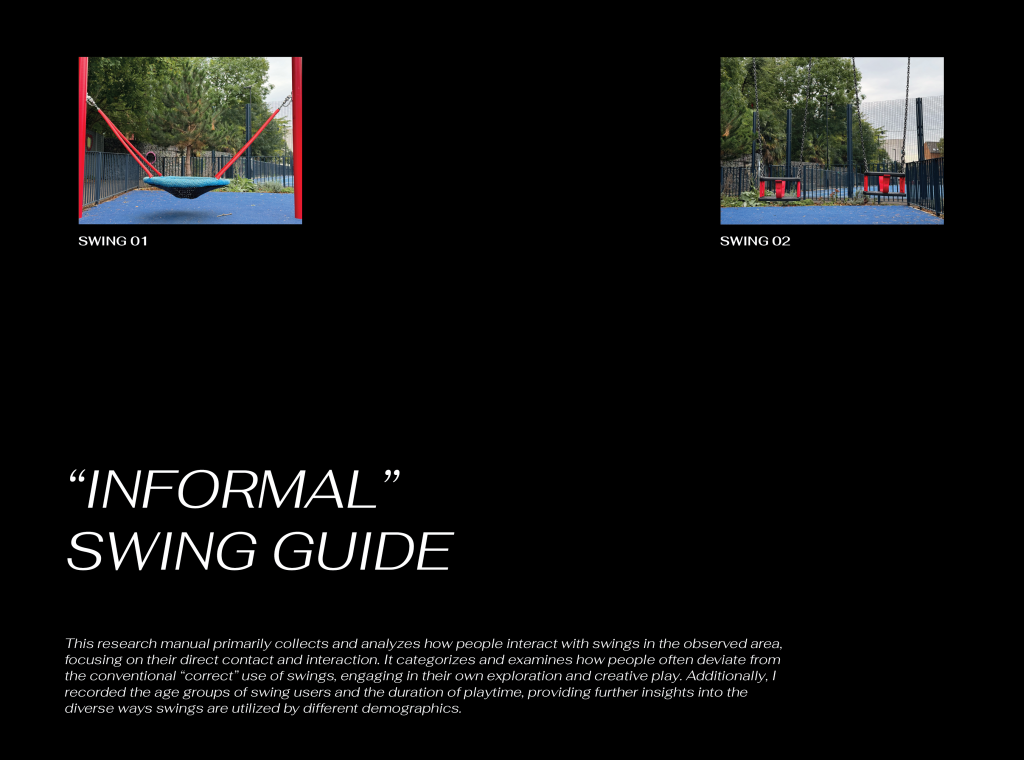
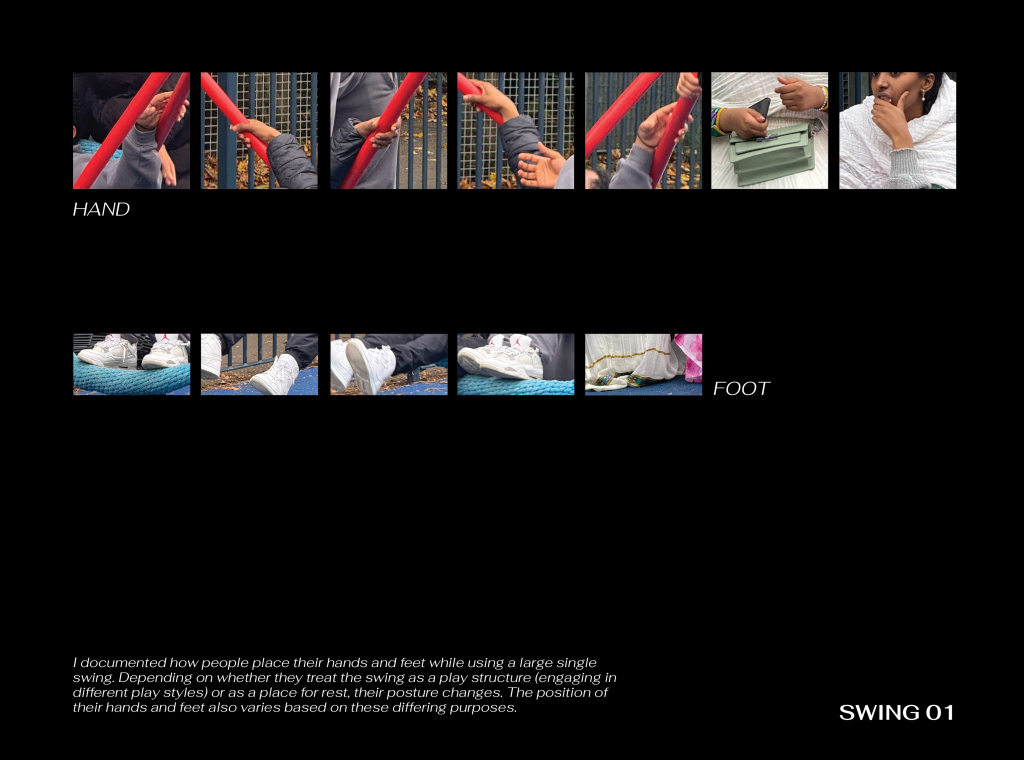
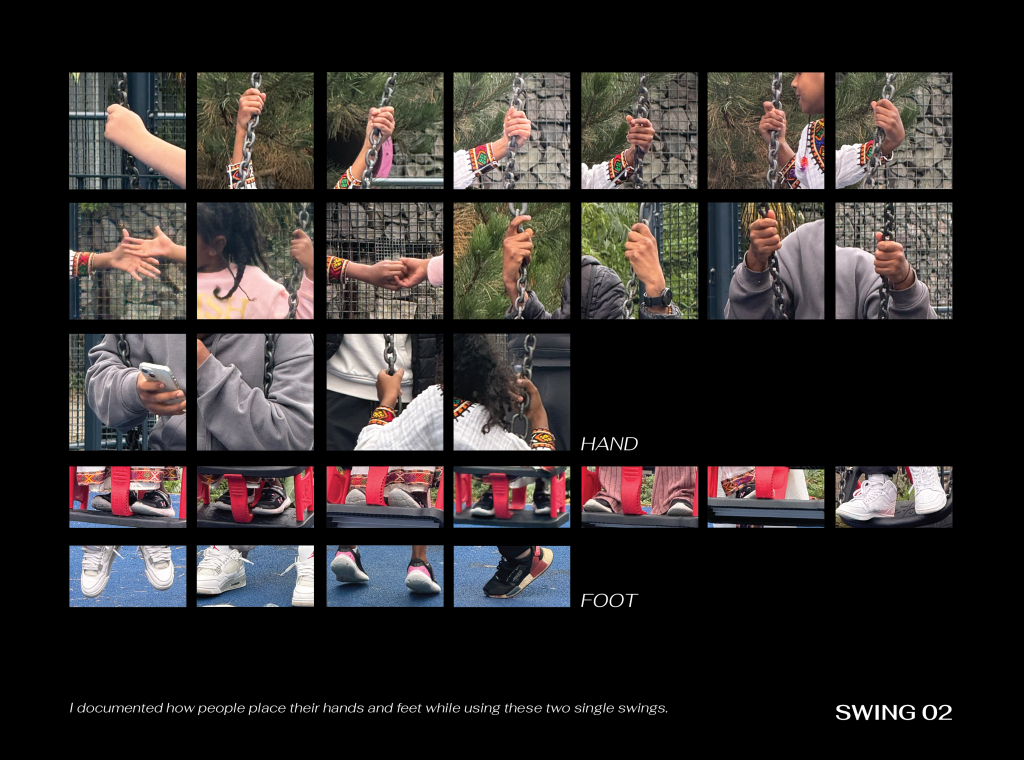
In these two pages of photographs, I focused on capturing the precise positioning of people’s hands and feet as they interacted with the two sets of swings. The images highlight how individuals grip the swing chains and how they stand or place their feet, showcasing the variations in posture and movement across different users.
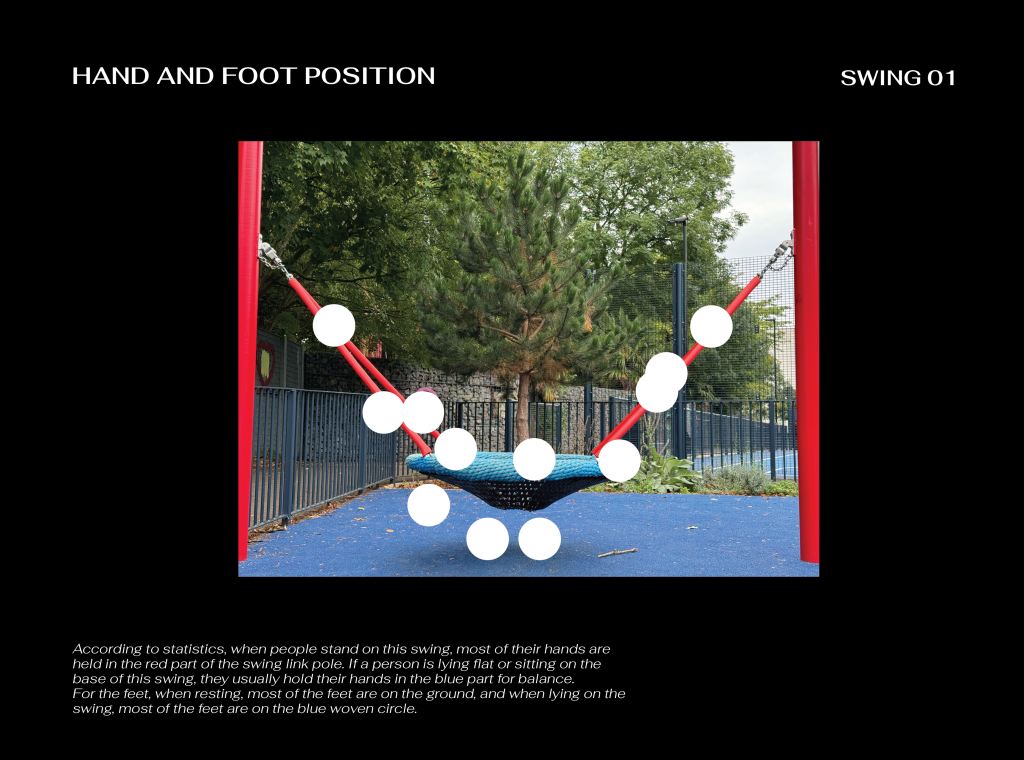
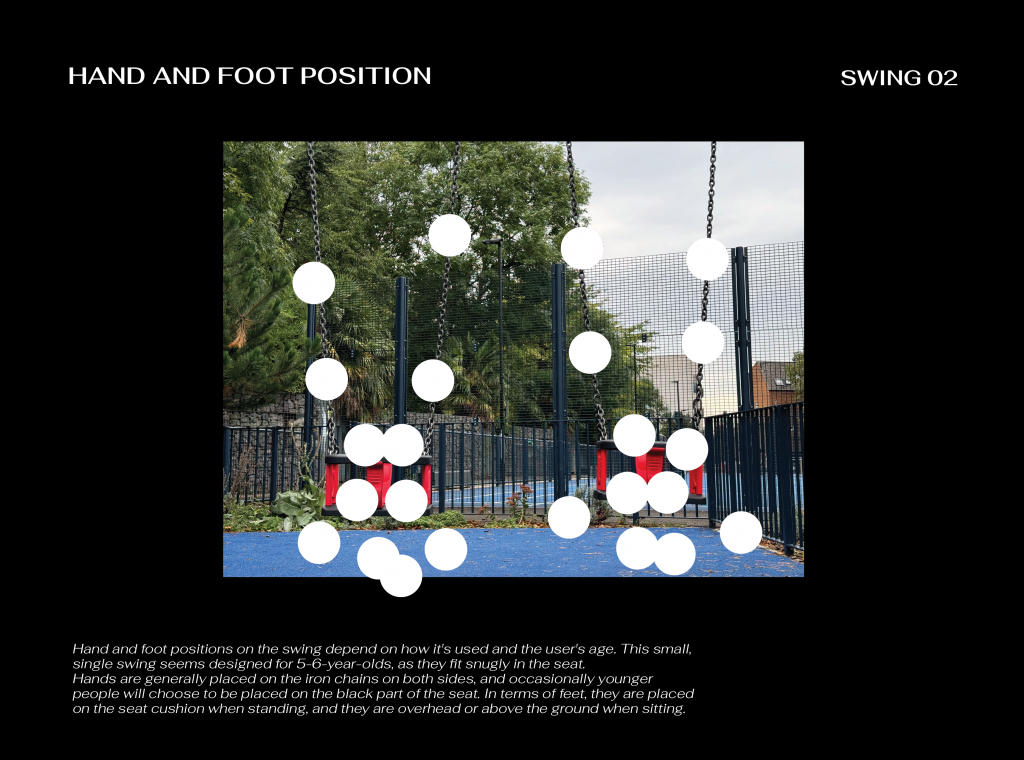
Based on the previously captured images, I categorized the various hand and foot positions and annotated the swing photos, marking the most common placement points. These annotations reveal recurring patterns in how people engage with the swings, emphasizing subtle but significant differences in their approach.
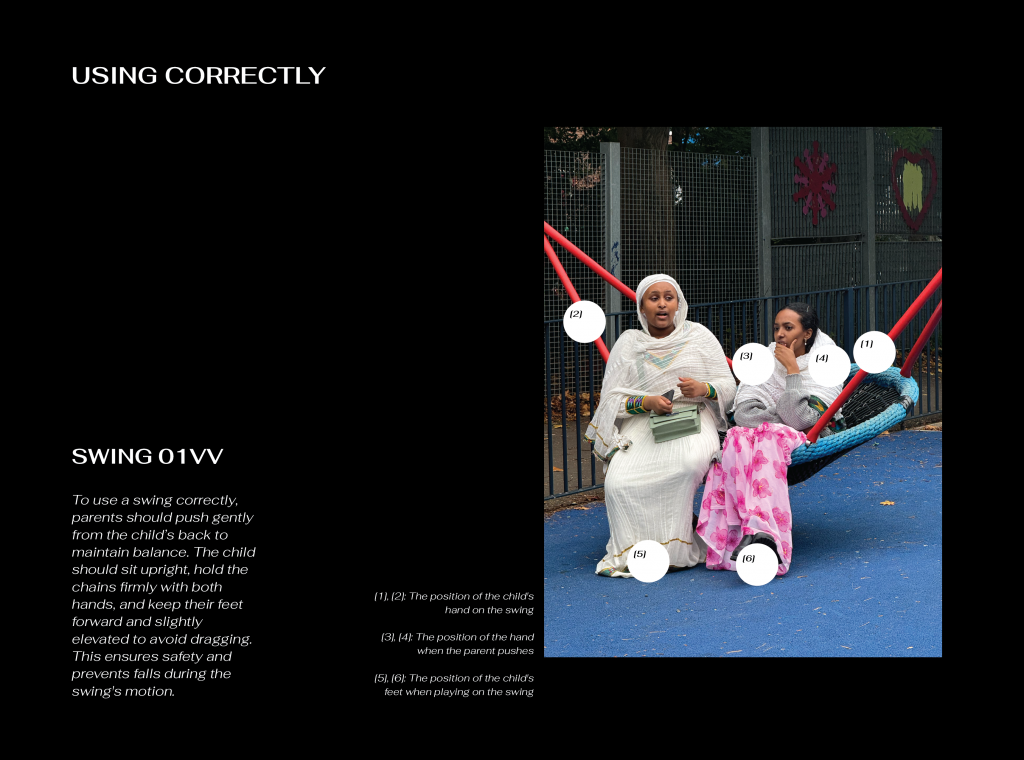
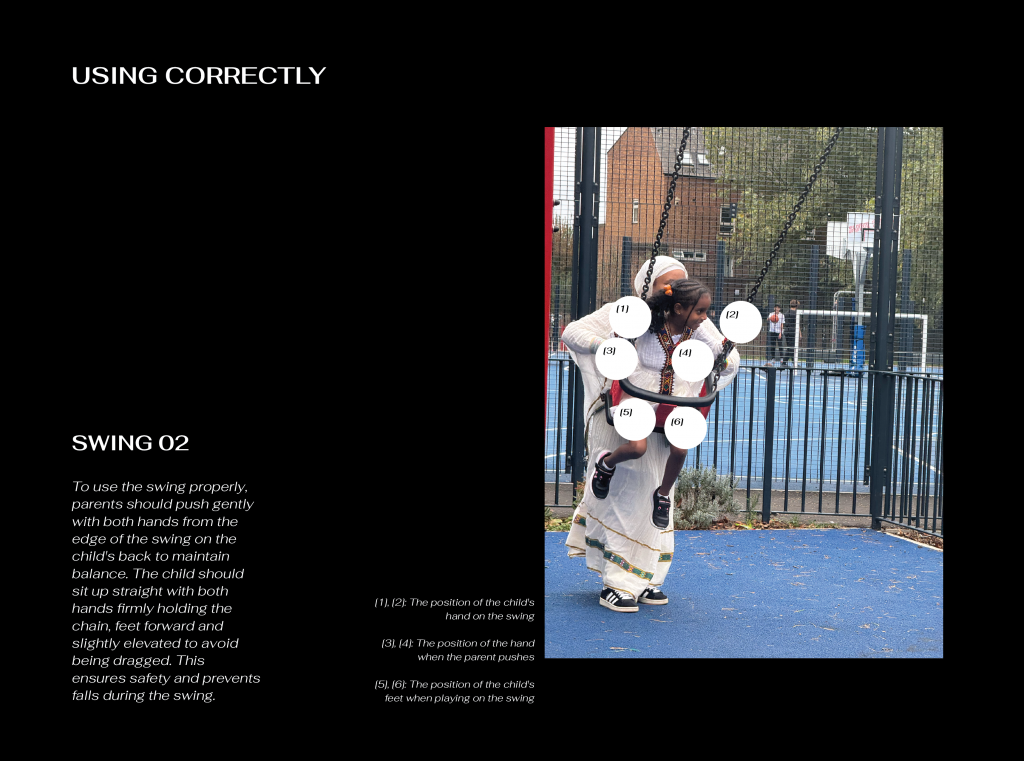
By comparing the socially prescribed “correct” way to use swings, which often aligns with specific age groups, to how individuals of different ages actually use them in unintended ways, I discovered a contrast. My analysis showed that people’s postures and their interaction with the swings vary depending on their purpose, demonstrating how users of different ages adapt their contact with the swings to suit their unique goals.
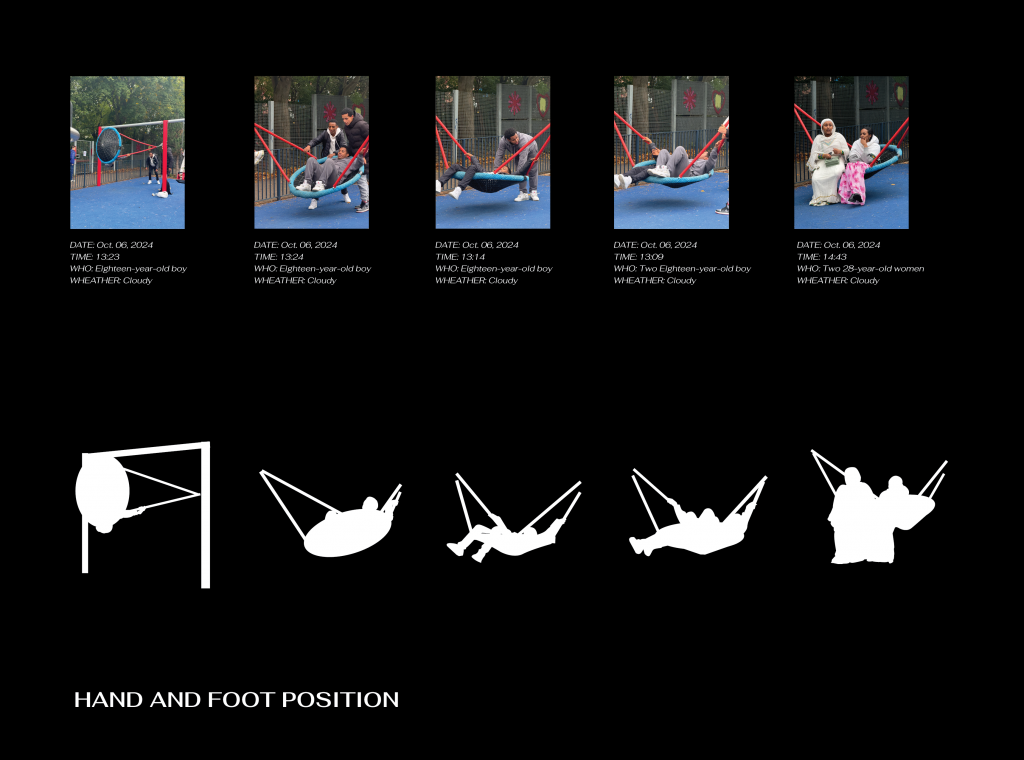
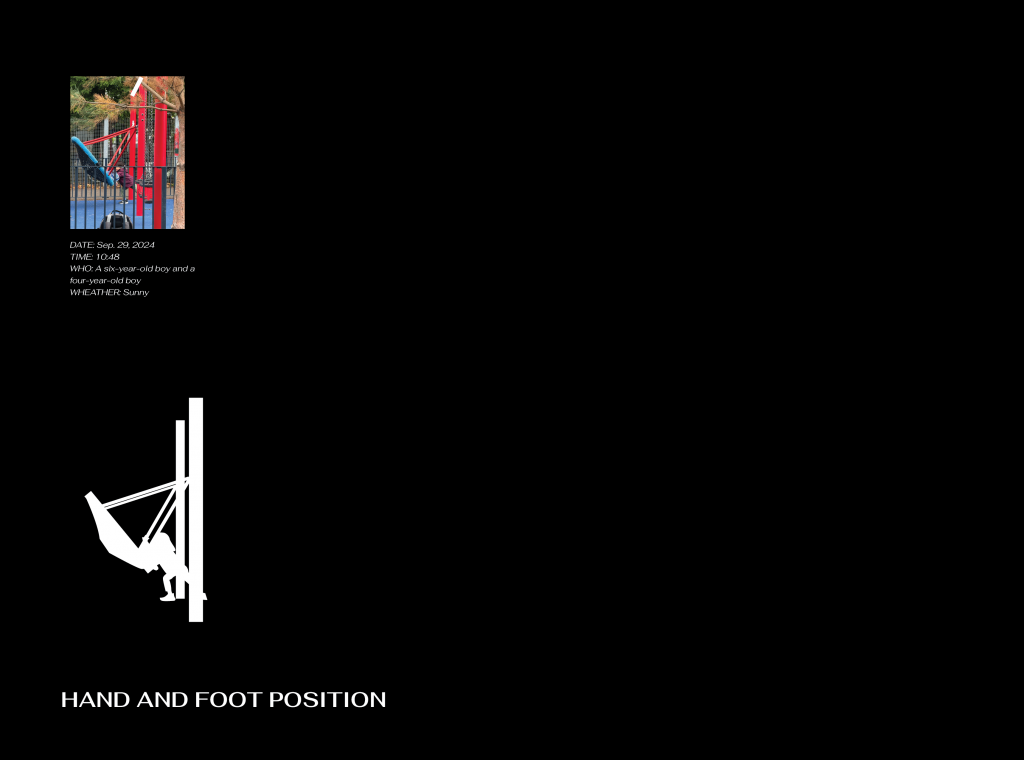
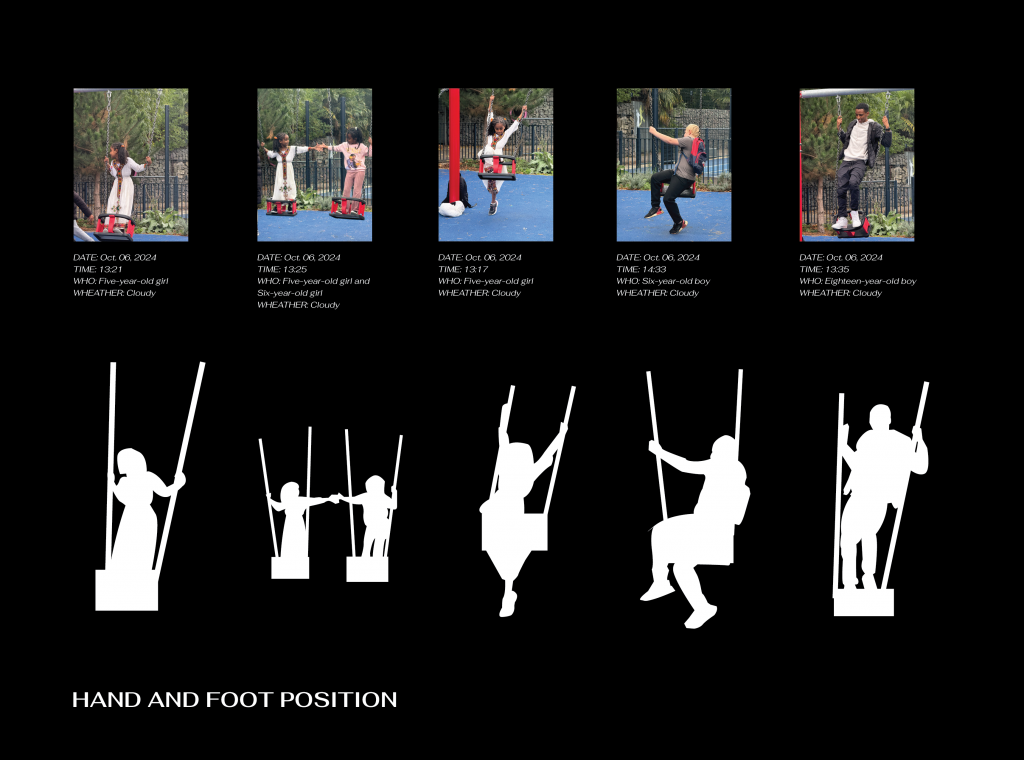
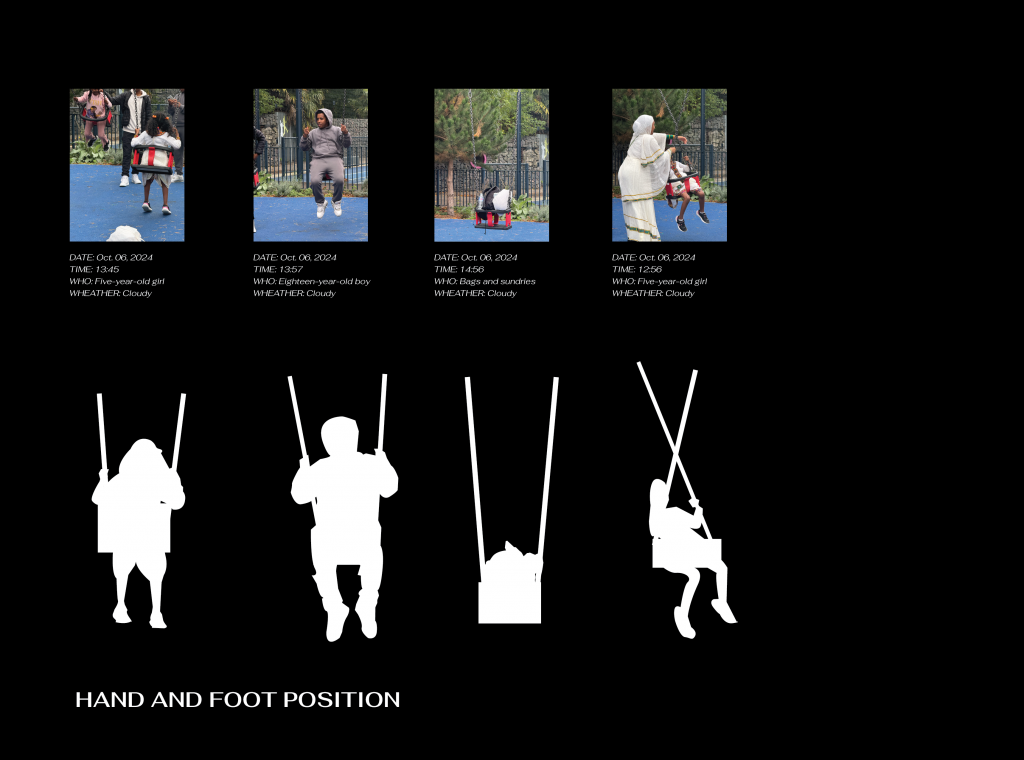
Comments